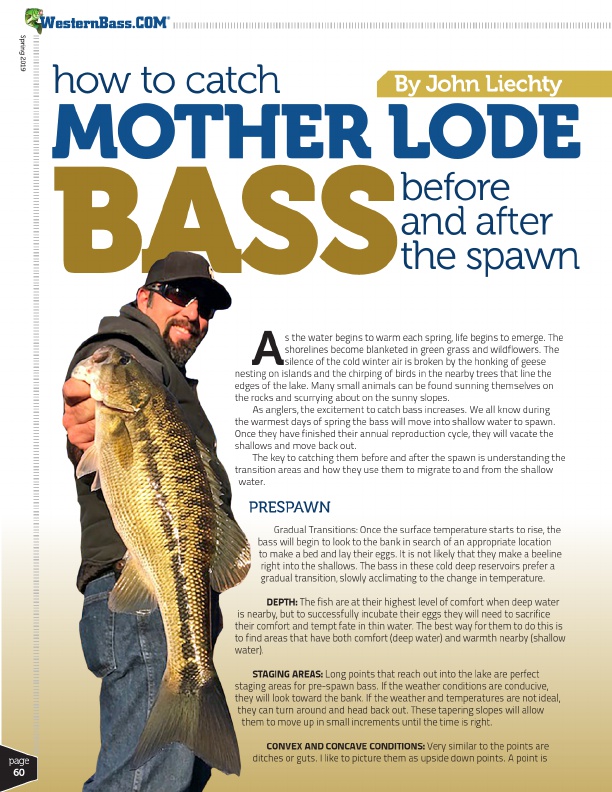
®
Spring 2019
how to catch
By John Liechty
MOTHER LODE
BASS
before and after the spawn
page 60
A
s the water begins to warm each spring, life begins to emerge. The
shorelines become blanketed in green grass and wildflowers. The
silence of the cold winter air is broken by the honking of geese nesting on islands and the chirping of birds in the nearby trees that line the
edges of the lake. Many small animals can be found sunning themselves on
the rocks and scurrying about on the sunny slopes.
As anglers, the excitement to catch bass increases. We all know during
the warmest days of spring the bass will move into shallow water to spawn.
Once they have finished their annual reproduction cycle, they will vacate the
shallows and move back out.
The key to catching them before and after the spawn is understanding the
transition areas and how they use them to migrate to and from the shallow
water.
PRESPAWN
Gradual Transitions: Once the surface temperature starts to rise, the bass will begin to look to the bank in search of an appropriate location to make a bed and lay their eggs. It is not likely that they make a beeline right into the shallows. The bass in these cold deep reservoirs prefer a gradual transition, slowly acclimating to the change in temperature.
DEPTH: The fish are at their highest level of comfort when deep water is nearby, but to successfully incubate their eggs they will need to sacrifice their comfort and tempt fate in thin water. The best way for them to do this is to find areas that have both comfort (deep water) and warmth nearby (shallow water).
STAGING AREAS: Long points that reach out into the lake are perfect staging areas for pre-spawn bass. If the weather conditions are conducive, they will look toward the bank. If the weather and temperatures are not ideal, they can turn around and head back out. These tapering slopes will allow
them to move up in small increments until the time is right.
CONVEX AND CONCAVE CONDITIONS: Very similar to the points are ditches or guts. I like to picture them as upside down points. A point is